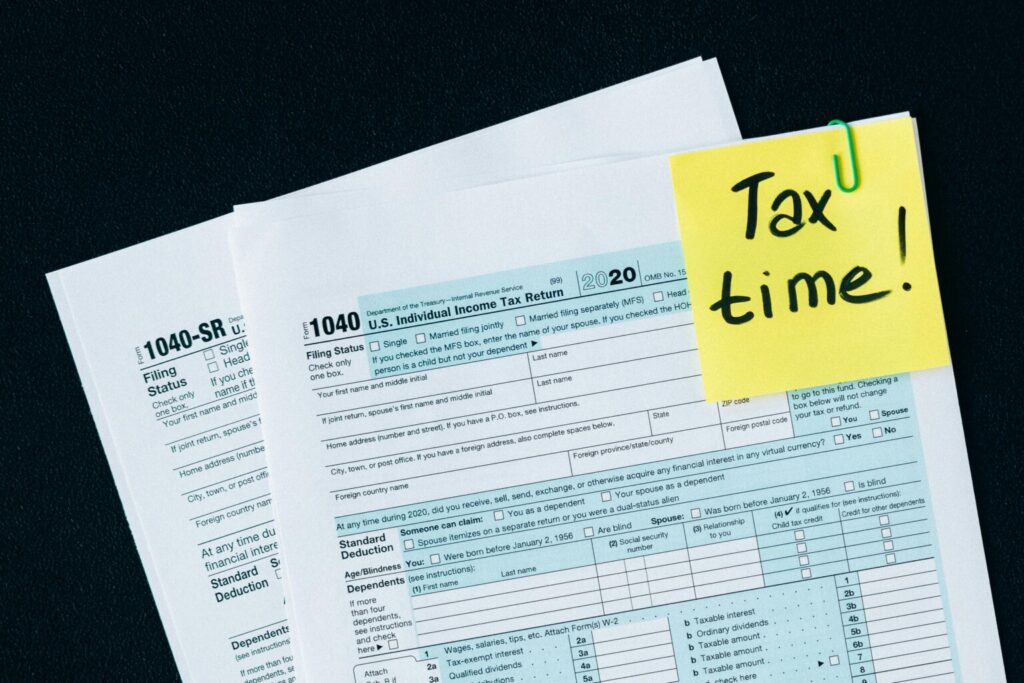A corporation is a legal entity distinct from its owners. Shareholders purchase shares of the corporation. Due to the numerous advantages of corporations, many individuals opt for this structure. It is considered a separate legal entity from its owners because it can make independent decisions, enter into contracts, acquire assets, and incur liabilities. It has limited liability, meaning that shareholders are only liable up to the amount of their investment, thereby protecting their personal assets from business-related liabilities. There is no limit to the corporation’s existence, as it can continue to exist regardless of ownership changes. Its life is not determined by the lifespan of the owners.
Corporate income tax refers to the tax on profits, or taxable income, which includes receipts minus the cost of goods or services sold and operating expenses. Previously, the maximum corporate tax rate in the United States was 35%, but it is now flat at 21%.

Key Takeaways
- Corporate tax is the direct tax on a corporation’s profits or net income.
- Currently, the federal corporate tax rate is 21%.
- One drawback is that corporate income is subject to double taxation, where profits are taxed first at the corporate level and again at the personal level when dividends are paid.
- Distributions to shareholders are subject to 1099-Div, 1042, and 1042S filing requirements.
- If the estimated tax is $500 or more, corporations are required to make periodic payments throughout the taxable year. Failure to pay the estimated tax by the due date will result in an estimated tax penalty.
- Form 7004 is used to request an automatic extension of time to file an income tax return.
- Filing Form 7004 for an extension to file does not mean an extension to pay, so all estimated tax is due by the original due date.
Corporations Can Be Subject to Double Taxation
One of the significant challenges that corporations face is double taxation—situations in which a corporation’s income is taxed twice. An example would be a corporation that first pays taxes on its profits and then pays its shareholders dividends from its after-tax income, for which the shareholders are issued a Form 1099-DIV to pay personal income tax on the dividends.
For instance, the corporation’s net income was $100,000, and the corporate tax rate is 21%. The company is liable to the IRS for $21,000 in taxes. From the remaining $79,000, the corporation may then distribute dividends to its shareholders. These dividends are reported on shareholders’ tax returns, and the applicable tax rate ranges from 12% to 37%.
Options To Minimize Double Taxation
- S-Corp Election: A C-corporation may elect to become an S-corporation, where profits and losses pass through the shareholders. Before making an election, the company must meet certain requirements, including having fewer than 100 shareholders in a single stock class.
- Loans: Borrowed funds from the company are not subject to the same tax treatment as taxable dividends; however, the IRS may closely examine this transaction. Thus, it must be supported by a loan agreement with an acceptable federal interest rate.
- Pay Salaries Rather Than Dividends: The corporation may pay salaries as long as the shareholder is performing services for the business. Payroll withholding tax can be offset against the shareholder’s personal income tax. Moreover, businesses can still deduct salary and payroll taxes as business expenses, which helps reduce their net income.
- Policy on Dividends: The corporation shall strategically administer dividend policies to minimize shareholder tax liability.
A second instance of double taxation occurs when a corporation conducts international business in which profits are earned in one country, but the primary business is conducted in another. If there is no treaty agreement between the countries, it may end up paying taxes in both countries.
Double taxation can significantly impact a company’s financial health and investor appeal. Corporations must assess their tax strategies and consider alternative options to reduce double taxation. We can help you figure out the best tax strategy for you.
When is Corporate Income Tax Filing Due?
Form 1120, or the standard IRS Corporate Income Tax Return, is usually due April 15th each year for those on a calendar year basis. The following are deadlines for other types of years, structures, and situations:
- Fiscal Year: The 15th day of the fourth month following the end of the tax year
- Fiscal year ending June 30: September 15
- S-Corps or 1120-S: September 15th
- Final Tax Return: The 15th day of the fourth month following the date of dissolution
Form 1120-W, Estimated Tax for Corporations
Corporations are required to make quarterly estimated tax payments for the tax year. If a corporation expects to owe $500 or more in taxes, it is generally required to make estimated tax payments. The payment is due on the 15th of the 4th, 6th, 9th, and 12th months of the company’s tax year. Corporations can use the estimated tax worksheet on Form 1120-W to calculate their estimated liability by estimating their annual income, deductions, and credits. Failure to pay the estimated tax when the amount due is $500 or more will incur a penalty and interest.
Quarterly estimating the tax due allows the corporations to adjust their estimated tax payment, especially when there is a sudden increase or decrease in the corporation’s income or expenses, as opposed to paying a fixed amount quarterly, which may still incur an estimated tax penalty and interest if you pay too much or too little tax. Other states also require estimated tax payments, which will vary depending on the rules of the state; therefore, it is important to estimate or consult with tax professionals to ensure compliance with all the estimated payment requirements.
Employer’s Tax Calendar
| Forms | Due Date | Use |
| Form 940, Employer’s Annual Federal Unemployment (FUTA) Tax Return | The last day of the first calendar month after the calendar year ends | To report the FUTA tax on wages you paid. |
| Form 941, Employer’s Quarterly Federal Tax Return | The last day of the first calendar month after the calendar quarter ends. | To report social security and Medicare taxes and withhold income taxes on wages if your employees aren’t farm workers or household employees. |
| Form 943, Employer’s Annual Federal Tax Return for Agricultural Employees | The last day of the first calendar month after the calendar year ends | To report social security and Medicare taxes and withhold income taxes on wages if your employees are farm workers. |
| Form 944, Employer’s Annual Federal Tax Return | The last day of the first calendar month after the calendar year ends | Certain small employers use it instead of Form 941 to report social security and Medicare taxes and withheld income tax |
| Form 945, Annual Return of Withheld Federal Income Tax | The last day of the first calendar month after the calendar year ends | To report income tax withheld on all nonpayroll items. A list of nonpayroll items is available in the Instructions for Form 945 |
What are the benefits of filing a Corporate Tax Extension?
Form 7004 is used to request an automatic filing extension of the due date to file the corporation’s income tax return for six months. It can be filed electronically or by mail. In general, the automatic filing deadline extension period is six months, except C-corporations whose tax year ends on June 30, for which the extension period is seven months.
NOTE: Filing Form 7004 extension of time to file does not mean an extension to pay! To avoid penalties and interest, pay the estimated tax due on or before the due date of the applicable tax return.
So, why file an extension if you still have to pay tax on the original deadline? One of the advantages of requesting an extension is the ability to file a superseding return. It is a return filed after the original return but prior to the due date (including extensions). It replaces the original return, so any errors found after filing the original return can be corrected without filing an amended return.
What is the tax rate on C-Corp dividends?
C-Corporation dividends are subject to a progressive tax rate, which is based on the individual’s taxable income and may vary based on total income and filing status.
1. Qualified Dividends: Depending on the individual’s income level and tax filing status, qualified dividends are taxed at 0%, 15%, or 20%. The majority of dividends from U.S. corporations and some foreign corporations are eligible for reduced tax rates.
Individuals with an annual income of $44,625 or less ($89,250 if married and filing jointly) do not pay taxes on qualified dividends, only on their income. Individuals earning more than $44,625 (or more than $89,250 if filing jointly) must pay at least 15% tax on qualified dividends beginning in 2023. The tax rate on qualified dividends is 20% if the individual’s taxable income exceeds $492,300 (or more than $553,850 for married couples filing jointly).
2. Non-Qualified Dividends: Dividends that do not meet the criteria for qualified dividends are typically taxed at ordinary income tax rates and brackets, which could be as high as 37% for the highest income earners. Tax rates can also vary depending on an individual’s specific financial situation.
How does a corporation get liquidated?
Corporate liquidation is the process of winding up a company’s affairs, bringing an end to its existence. It involves the sale of corporate assets, the payment of debts and other liabilities, and the distribution of any remaining assets to shareholders. Liquidation may be either voluntary or compulsory. The most common types of liquidation are
1. Compulsory or Forced Liquidation: Dissolution is not initiated by the shareholders or directors but due to bankruptcy or legal action by the creditors, who petition the court to liquidate the business. The court appoints a liquidator to oversee the process.
2. Members’ Voluntary Liquidation: This is also known as solvent liquidation. This occurs when the company’s board of directors voluntarily resolves to liquidate a business with sufficient assets to pay off its debts. Before filing for dissolution, the shareholders must approve the resolution, and the business must be current on all taxes and annual report filings with the state.
3. Creditors Voluntary Liquidation: It is also known as insolvent liquidation. This is when the directors or shareholders initiate the company’s liquidation or declare insolvency before creditors initiate legal action against the company for inability to pay debts.
The first step in dissolving a corporation is obtaining the necessary resolution from within the company. Depending on local laws and the articles of incorporation, it usually requires a vote by the board of directors and shareholders. Second, the business must submit all required documents and pay all applicable fees to the federal government and the state where it is registered. This also involves filing the company’s final federal and state tax returns.
Then, the company’s assets will be sold to settle its liabilities. There are two different types of assets: tangible and intangible. Tangible assets are physical, quantifiable assets that an organization can use to generate income. Examples of tangible assets include cash, inventory, fixed assets, furniture, and fixtures. Intangible assets, on the other hand, are non-physical assets representing valuable rights, privileges, or advantages a business holds. These intangible assets have economic value despite their lack of physical substance.
The distribution of assets is based on the priority of claims; debts will be paid first, and any remaining assets will be distributed to the shareholders. Below is the order or priority of the claims.
- Secured Creditors
- Unsecured Creditors
- Preferred or Preferential Creditors
- Non-Preferred or Non-Preferential
- Shareholders
Priority is given first to secured creditors, then to unsecured creditors. Preferential secured creditors have a specific claim on the company’s assets, which serve as collateral. The most typical example is a bank loan with a mortgage on a business’s land or other real estate. It may also include obligations secured by liens on particular company assets. In contrast, preferential creditors may not have collateral or liens on the company’s assets but are given preferential treatment during the liquidation process.
Unsecured creditors can be categorized as either preferred or nonpreferred. Examples of preferred or preferred creditors include company employees (unpaid wages) and taxing authorities such as the Internal Revenue Service. Non-preferential creditors are debts without collateral, meaning that no specific asset is used to guarantee the debt. These include suppliers, contractors, service providers, and credit card companies.
The remaining assets are distributed following the settlement of a company’s obligations. There are two types of shareholders: preferred and common. Preferred shareholders have a higher claim on the company’s remaining assets than common shareholders, who are typically in the last line. In most cases, there will be little to no value left for common shareholders. Many are unaware that distribution to shareholders requires additional filing. Distributions made to US shareholders must be reported on Form 1099-DIV and the shareholder’s tax return.

Can Cleer help us file our corporate income tax?
Absolutely! Cleer offers Corporate Income tax preparation, which includes your state tax as well. We also offer all-inclusive bookkeeping packages that include monthly statements plus your federal and state tax returns. If you have any other questions about forming your company or maximizing your tax savings, book a consultation to discuss the best structure for your startup business, no matter what state you register in.
If you need any help, schedule a consultation, or feel free to contact us.






